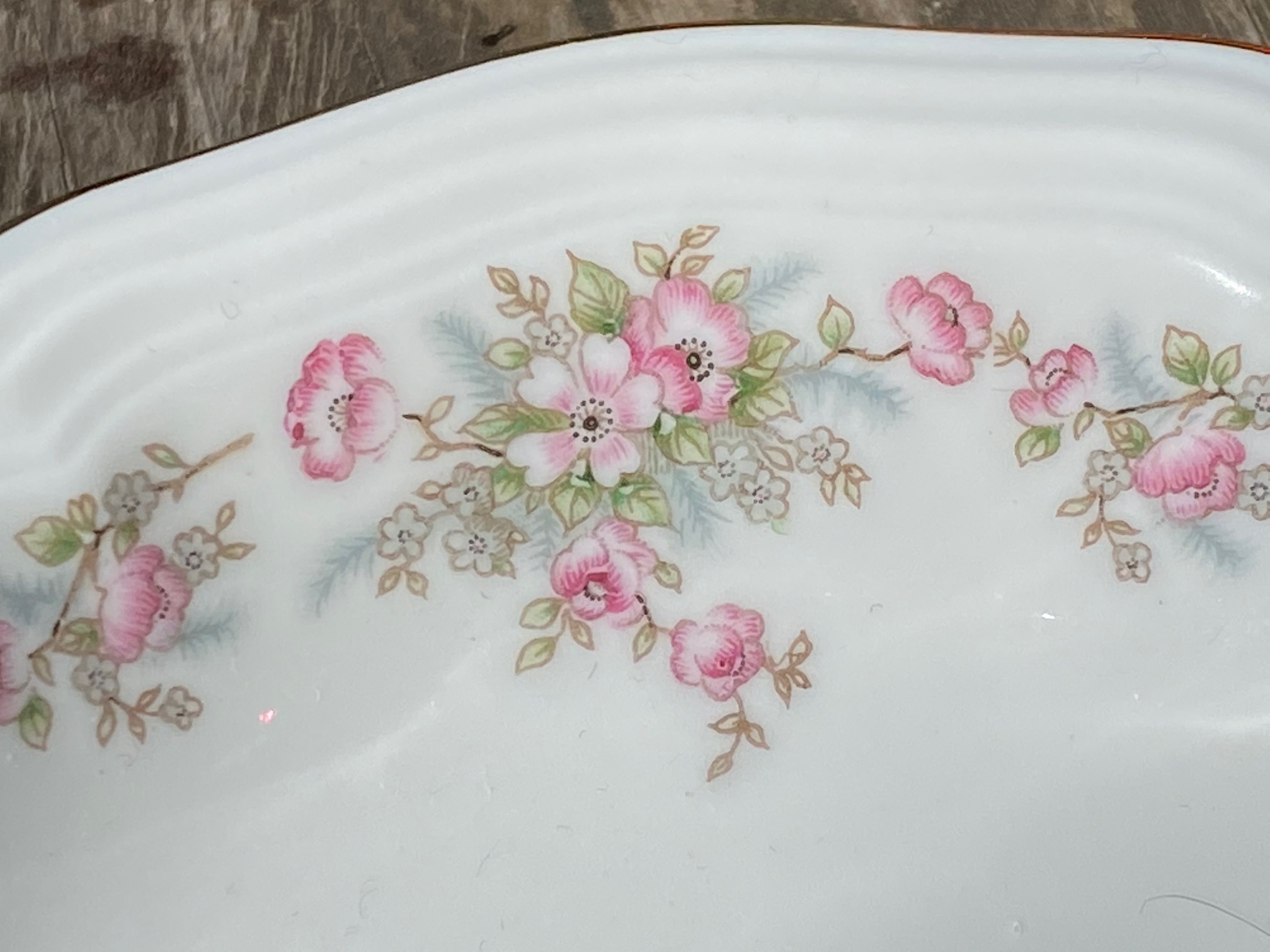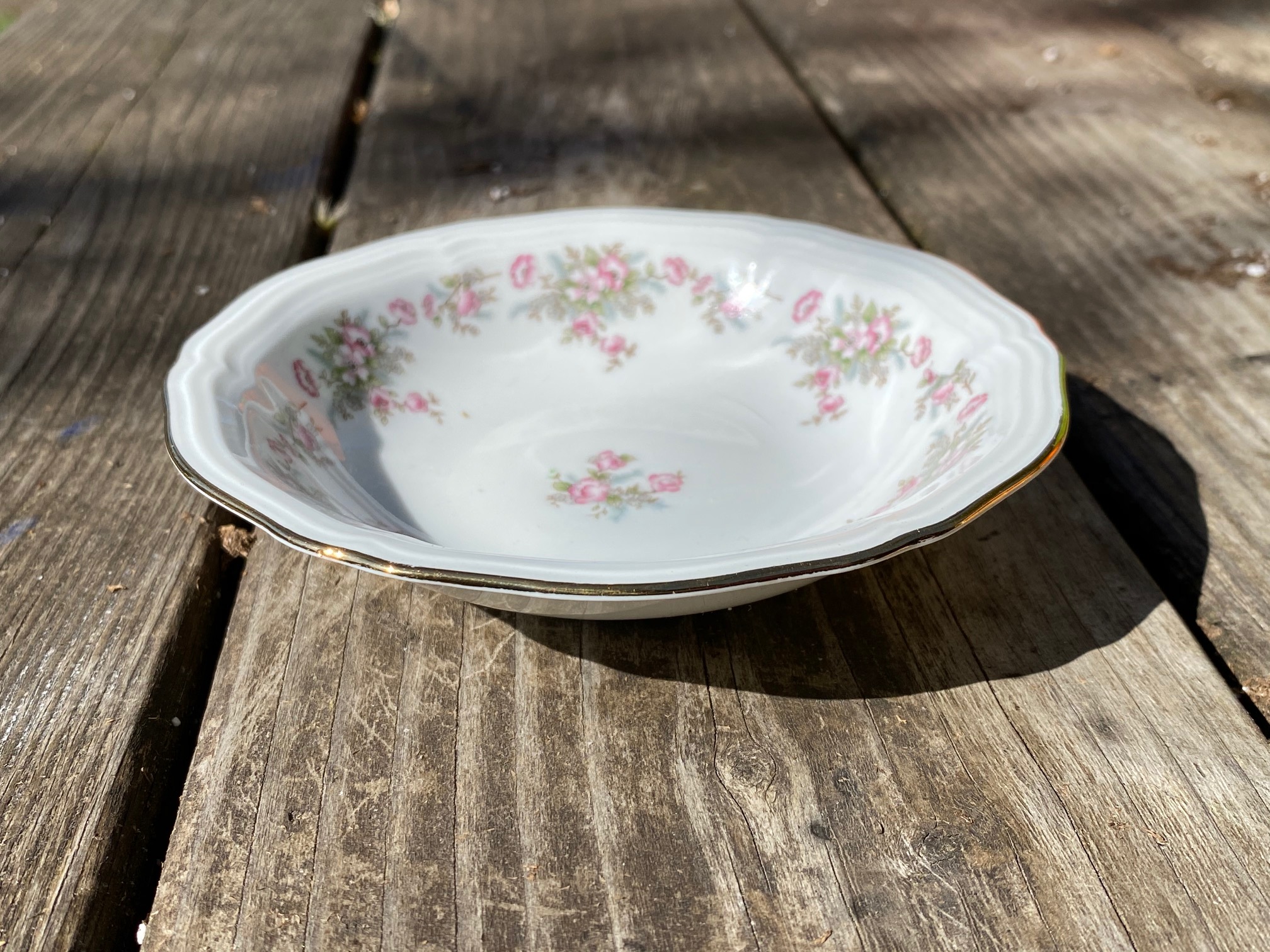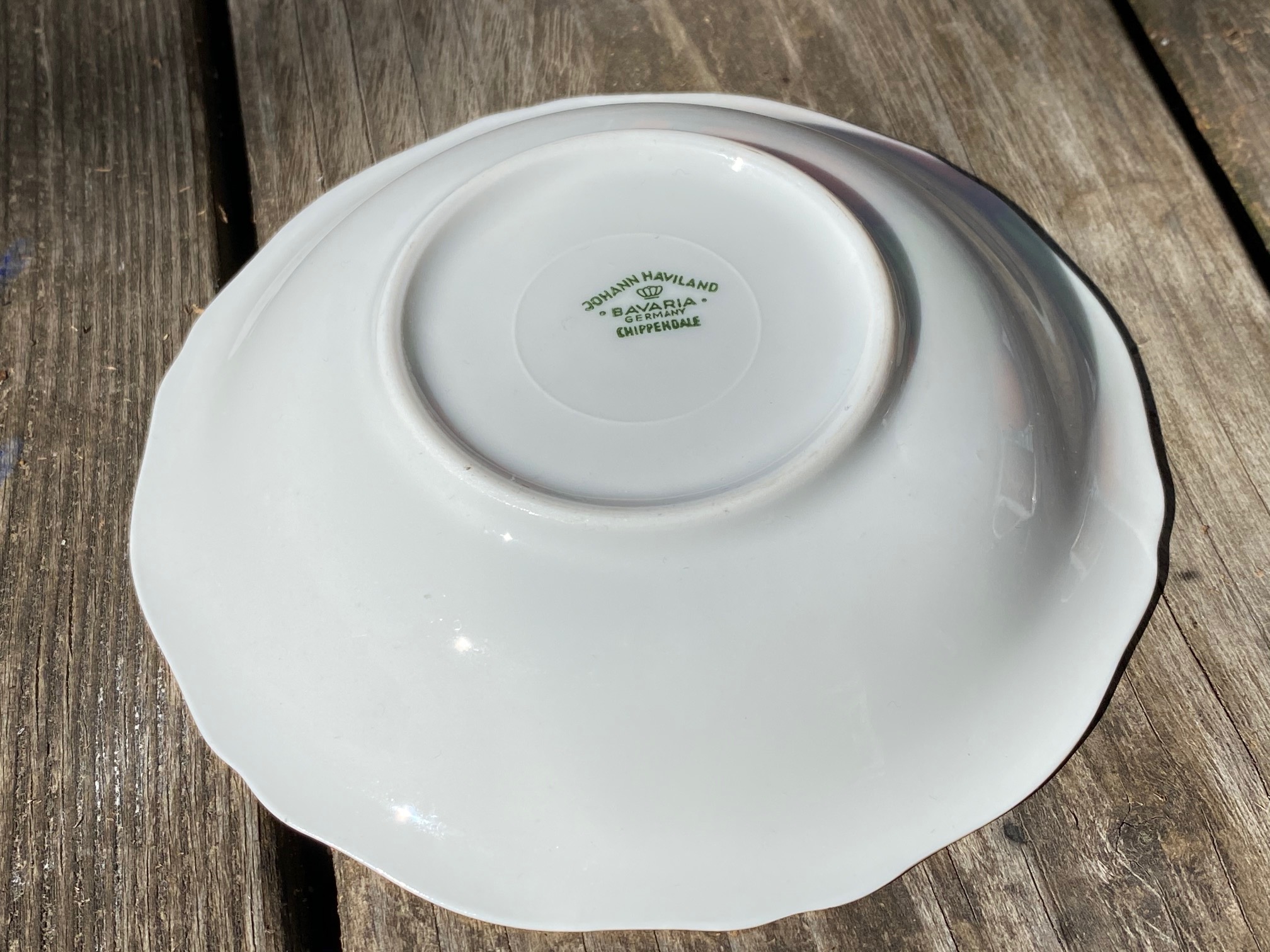Haviland Chippendale bowl (Germany, c. 1960-70): 4,608 ppm Lead + 529 Arsenic. What style china do you have?
Posted: Tuesday, March 17, 2020
Introduction: Tamara Rubin is an independent advocate for consumer goods safety, and she is also a mother of Lead-poisoned children. She began testing consumer goods for toxicants in 2009 and was the parent-advocate responsible for finding Lead in the popular fidget spinner toys in 2017. She uses high-precision XRF testing (a scientific method used by the Consumer Product Safety Commission) to test consumer goods for metallic contaminants – including Lead, Cadmium, Mercury and Arsenic. [bio link]
Johann Haviland Chippendale bowl (c. 1960s – 1970s):
The full XRF test results of the bowl pictured are below (so please scroll down). Here are links to some additional reading that may be of interest, based on your interest in the test results of this item:
- Click here to see more vintage dishes that I have tested.
- Click here to see more “Made in Germany” items I have tested.
- Click here to read about why this much Lead in china can be a serious problem!
Stay Safe Out There!
A quick note from Tamara
Hey readers – I hope you are staying well out there with all that is going on in the world right now. I’m hanging out mostly at home with my children – and have been doing so for about 10 days now. I pulled them out of school over a week ago – just to be safe. Each of my three youngest sons have compromised immune systems (which manifests in different ways for each of them), due to having been Lead-poisoned as babies.
In between kid-wrangling I am working hard to publish literally HUNDREDS of new posts (with test results for various consumer goods I have tested over the past couple of years, but have not yet had a moment to report on!). These posts have created a backlog in my system for more than a year now – and it’s actually nice to have a *break* with some time to catch up! To make this happen as quickly as possible, I am (as with this post) simply posting the images and the test results – without a lot of additional information. [Do not worry — I will continue to update them with more information as I get caught up and begin to have the time!]
For those new to my website, please check out the menu in the header of the website for more information about how I test things (and my background, etc.) On each post you can also click on any of the keyword tabs at the top of the post to find more items in that category. Here’s the post discussing the type of testing I do, and the specific instrument I use to detect, analyze and confirm metals content, and ultimately produce the resultant data for each item reported here – link.
Please Note: Test results reported below are science-based, accurate, and replicable. Test results reported here are from tests that were done for a minimum of 60 seconds each, and repeated multiple times, to confirm the results. As with all the testing reported here on my blog, a freshly-calibrated high-precision XRF instrument testing in Consumer Goods mode was used to test the item pictured here.
As always, please let me know if you have any questions.
Thank you for reading and for sharing my posts!
Tamara Rubin
#LeadSafeMama
Test results for the Johann Haviland Chippendale bowl (Made in Bavaria Germany) pictured on this post:
Floral print of food surface:
- Lead (Pb): 4,608 +/- 169 ppm
- Arsenic (As): 529 +/- 98 ppm
- Barium (Ba): 1,179 +/- 332 ppm
- Chromium (Cr): 607 +/- 51 ppm
- Antimony (Sb): 155 +/- 67 ppm
- Tin (Sn): 193 +/- 46 ppm
- Zinc (Zn): 285 +/- 42 ppm
- Iron (Fe): 1,865 +/- 158 ppm
- Chlorine (Cl): 6,540 +/- 1,198 ppm
White of food surface:
- Barium (Ba): 2,192 +/- 471 ppm
- Iron (Fe): 1,859 +/- 187 ppm
- Bismuth (Bi): 169 +/- 30 ppm
~ End of Post ~
Scroll down for additional photos of this item.


Never Miss an Important Article Again!
Join our Email List







How do I find out what your test results mean? I’m assuming the lead and arsenic levels you found are not good. Also, I have the Haviland Blue Garland set. Have you tested this set for lead? If one set from the same name brand on China contains lead, is it safe to assume all of the designs probably do? Thank you.
Hi. I also have a large amount of the Blue Garland by Johann Haviland, Bavaria Germany. Has this set been tested for these harmful contaminants?
Thank you!
I also have this set (blue garland) and want to know the results. Thank you!
I also have the Blue Garland china. Does it contain lead?
I have a large set of Blue Garland as well. Everything I can find on the internet says this pattern is lead free. Has this pattern been tested? If so please update us.
Thank you!
I also have the blue garland johann Haviland set – is this tested and is it lead free?
Have you tested the Johann Haviland, Rose Moss set? Does that one contain lead? Do all Haviland s contain lead?
Thank you for the work your doing, I think there should be a law that states if a seller is selling any type of dishware vintage or new it should be tested for lead etc…before being allowed to be sold and it should contain a warning and display only when being sold.